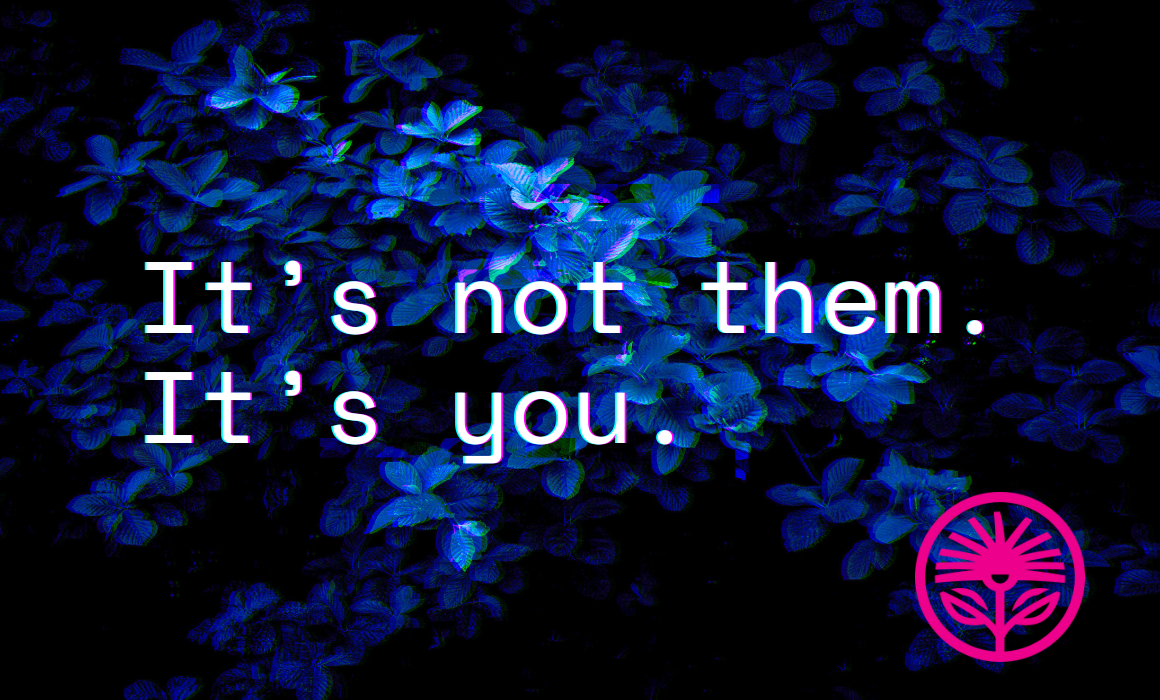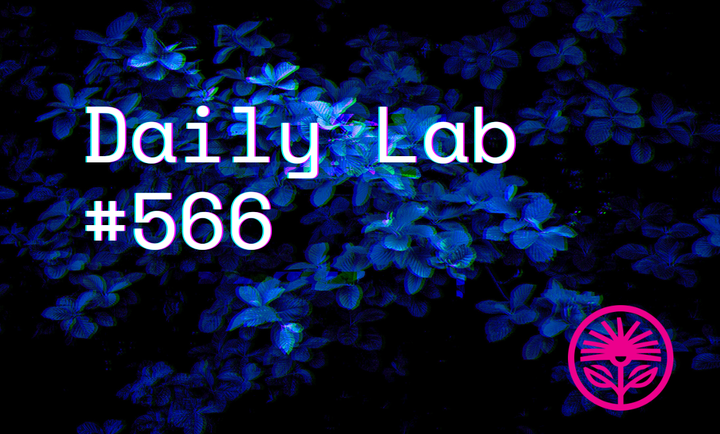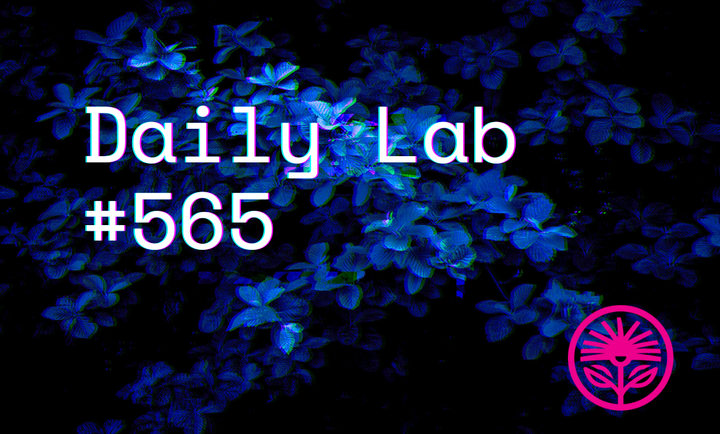It’s not them, it’s you — Kelford Labs Weekly
How to be findable.

“You can’t become known for your ideas if other people don’t know what they are.”
— Dorie Clark, The Long Game
Okay, so you should know a few things about me:
I’ve been blogging (well before it was called that) since I was in middle school. I started advising companies on content strategies 17 years ago (a blog for an industrial park’s newspaper, uninterestingly enough). I’ve created and deployed content strategies for governments, famous resorts, and solo consultants.
I’m pretty well invested in the whole content game. So before I give you a whole thing about why you should be making content, you should know that my biases here stretch to the moon and back.
And, look, I know content is a gross word. Let’s get that out right at the top. It was cool and neat and novel in 2008 but it’s been wearing thin ever since. But we don’t have time to litigate that right now.
From here on out, when I say “content,” I’d like you to mentally replace it with “demonstrated expertise.” But that’s too many letters to write each time, so just know that that’s what I really mean.
And that’s why making content is valuable. It’s one of the most direct ways to demonstrate our expertise, at a distance, to the people who might value it most.
“Great writers are not necessarily those people who write a good first draft, but rather those people who can write a bad first draft quickly and then edit it to develop their ideas.”
— Smith & Lewis, Both/And Thinking
“Now,” you might be asking by about this far down the page, “why would you feel the need to justify making content? Isn’t that obvious?” Or perhaps, “Isn’t that obsolete?”
“Maybe,” I reply, “and no.”
Because I see a lot of small businesses, service providers, and even deep tech innovators ignoring content as a marketing channel. Not entirely because they don’t want to, but increasingly because they don’t know how.
With ChatGPT, a flailing Google, and splintering of social media, it’s really hard to know what you’re actually supposed to make. And where you’re supposed to post it.
Yes, AI is flooding the internet with slop and real people with real insights are being drowned out. That’s a fact.
But real people are actively looking for real advice. They want to hear from you—the AI crap is just in the way. The only way to be found is to be findable.
Same with Google. Yeah, it’s cool to dunk on them these days, and it’s also true that they’re not referring as much as they used to. But if you’re selling services, not serving ads, you don’t need that much traffic. You just need to be found by the people looking to find you.
And yep, the big question of “where do I even post?” is bigger than ever. Mastodon? Bluesky? Threads? LinkedIn? TikTok? Substack? Medium? X.........? But you don’t have to be everywhere. You just need to be where the people looking for you are.
And I suppose that’s my central pitch on content:
If you’re good at what you do (and I know you are) and you’re serving a real market, there are people in that market looking for businesses like yours.
You can do the hard sales hustle, you can attend trade shows, you can cold-DM, and you can spend on ads. And, look, some of that is great and worth it.
But if people have to jump from a DM to a sale—with nothing in between to get them onboard with your perspective—you’re going to lose a lot of opportunities.
And you’re going to have to spend more on ads that aren’t backed up by content than if you had a soft landing for prospects to hit when they’re not yet ready to commit.
“People do not choose Brand A over Brand B because they think Brand A is better, but because they are more certain that it is good.”
— Joel Raphaelson as quoted in Rory Sutherland’s Alchemy
So how do you get started?
This is what I always recommend: Look around your office, or take a mental tour through your process, and ask yourself this:
What is something I’m already doing that would demonstrate my expertise if other people saw it?
Because the wrong way of doing things is to decide on a tactic or medium—like, “I should be doing video!” and then trying to back into a strategy.
The right way is to consider what you’re currently capable of and making that presentable and public, first. That’s your starting point.
The canonical example is a manufacturer showing you the process—and concerted effort and quality—behind their product. Or think about movies showing you the behind-the-scenes of stunts on YouTube ahead of their theatrical release.
For service providers, it can be a bit tougher. But the same idea applies: There’s almost certainly something you’re already doing that can be adapted into content.
For me, I think by writing. These ideas are getting explored in writing anyway, so editing them down isn’t all that much of an extra burden. Voila, newsletter!
For you, it might be turning your process documentation into LinkedIn posts. Or transforming your mental frameworks into visual workflows.
Look, I’ve created content for more brands than most people on the planet, I can comfortably claim. I know how these things get off the ground—and off the rails.
Content that works, that gets done, and that keeps going begins from a place of capability and confidence, not from a place of envy or mere eagerness.
My whole secret is starting from where you are, instead of trying to transport you to another world where you’re more capable, more confident, or suddenly more creative than you are right this second.
If you want to get going, start from where you already are.
“Your point of view should answer your audience’s pivotal question: Why should I listen to you?”
— Rochelle Moulton, The Authority Code
The best part is, even if nobody sees your content right away, it helps you.
A newsletter or blog gives you stock expressions to use in sales conversations. Breaking your process docs up into engaging LinkedIn posts gives you the chance to iterate and improve upon them. Documenting your mental models for your work helps you explain your thinking to others.
But do me a favour: If you can’t think of something, reply to this email (or email labs@kelfordinc.com) and tell me a little bit about your work and we can chat about the type of content you might produce.
I might be biased, but I come by it from experience: I know, somewhere in the way you work, there’s a way to demonstrate that work and why it’s valuable.
And that’s the case for content:
Your best customers are out there, looking for a business like yours to help them.
I’m sorry to be the one to tell you, but if your ideal customers can’t find you, that’s not their fault. Or the market’s. Or the economy’s. Or the algorithm’s (okay, it could be the algorithm).
It’s on you. It’s on me. It’s on marketers and entrepreneurs to be findable, not just beg to be found.
Yes, they might get blocked by AI slop, or scooped up by a flashy competitor spending on expensive ads.
Or they might get confused by the options available on Google and bounce out of the market entirely.
But, if you’re there when they look, if you’ve demonstrated your expertise in writing, video, audio, or some other media I’m forgetting, you have a chance to be found.
So make sure you’re findable, by making content.
Kelford Inc. shows you the way to always knowing what to say. Marketing content and messages for hands-on entrepreneurs.



